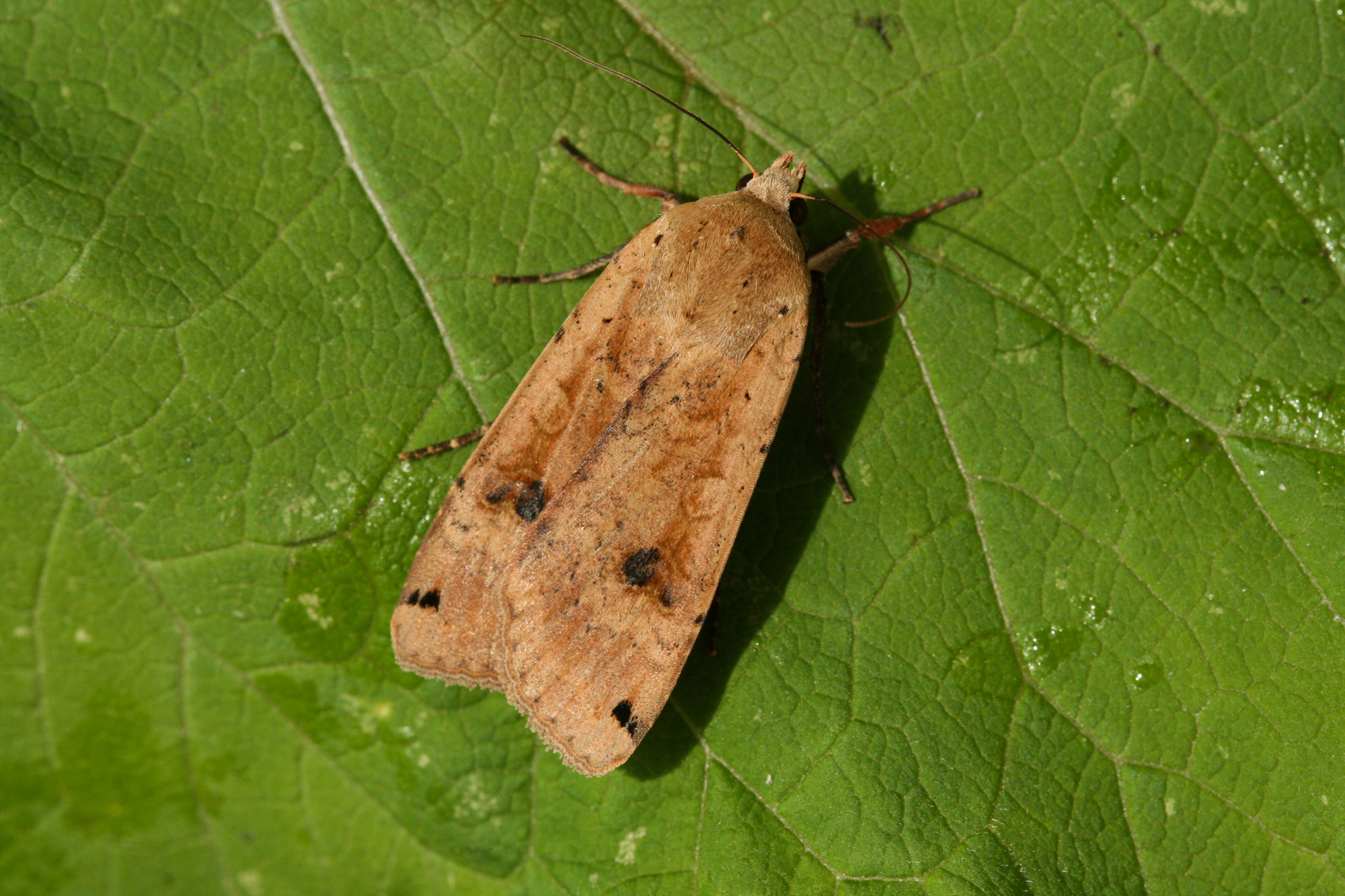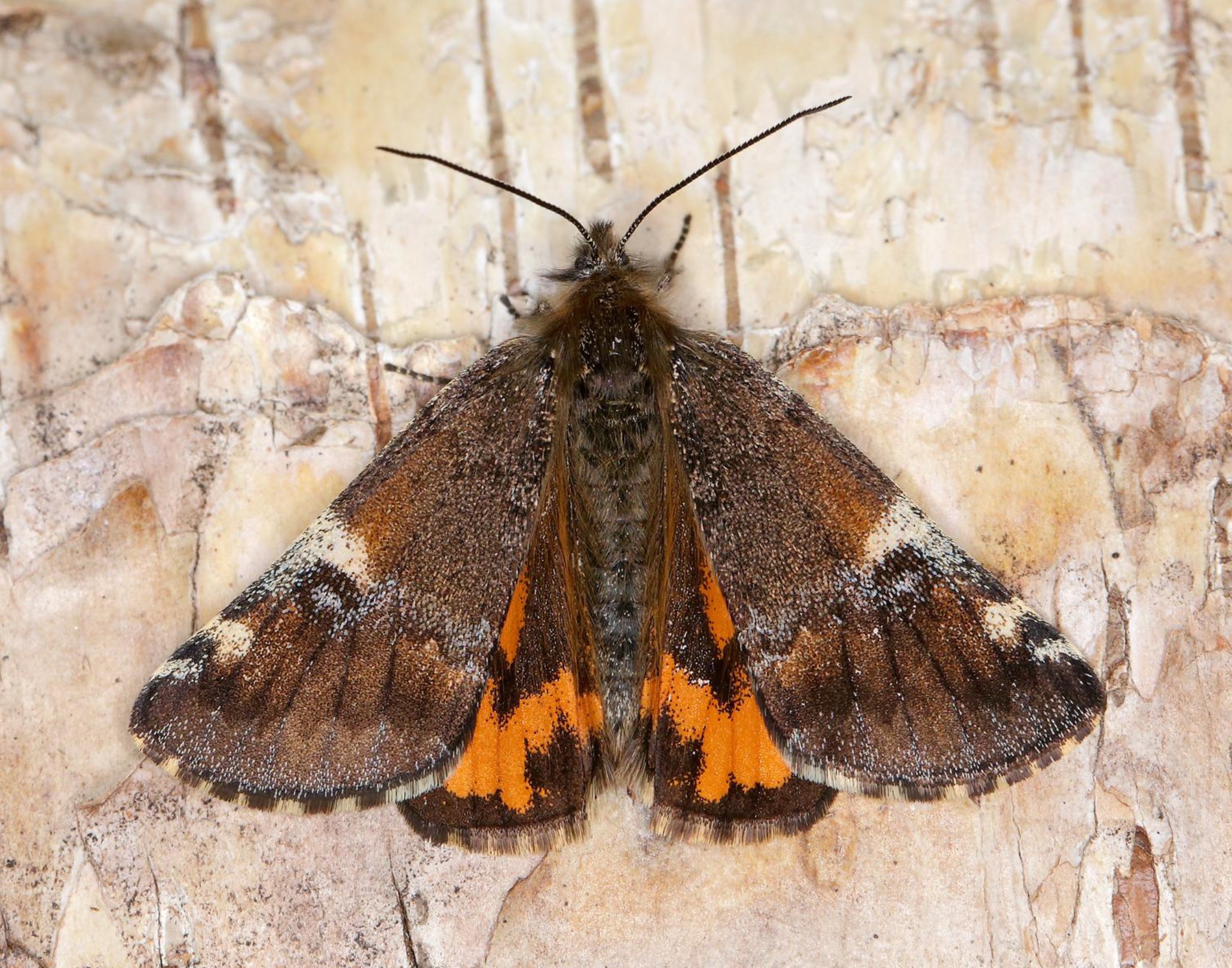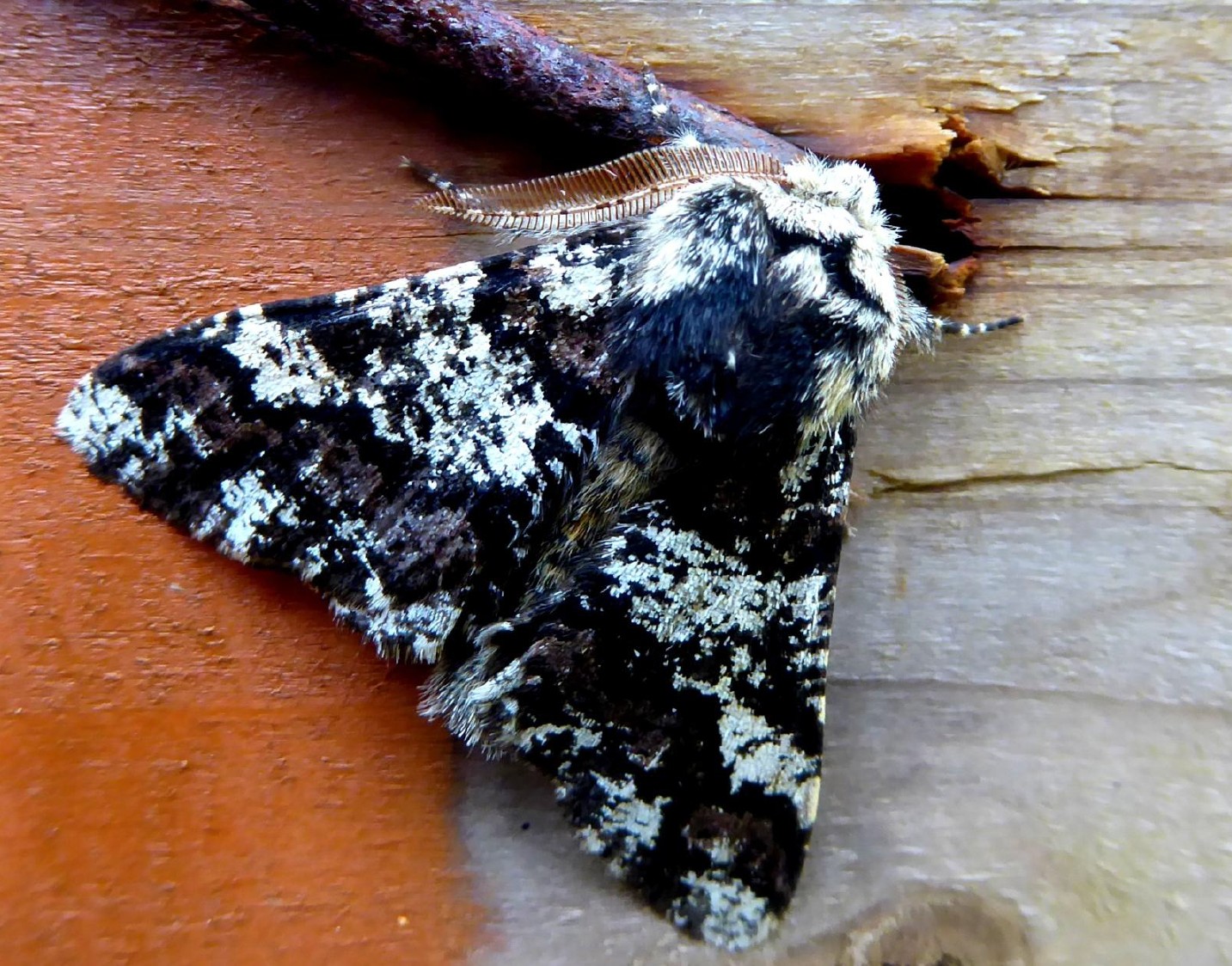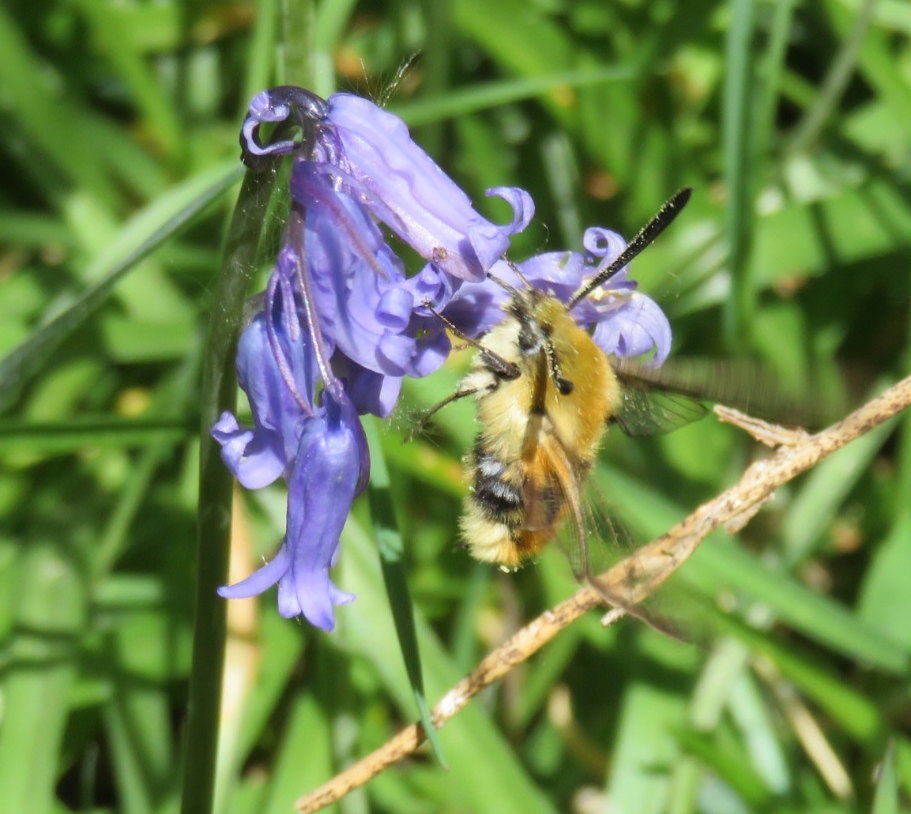This is a moth which deserves proper recognition beyond the LYU abbreviation and the havoc that it can cause in moth traps where 300 individuals in one night is not that uncommon! This is our most common large moth and although it has been found on the wing from April through to the end of October it is in July and August the main emergence happens. The second week in August is normally the peak with moths swarming everywhere – frequently visiting buddleia and other flowers and attracted to any light. During the day they rest deep in the vegetation or behind or beneath various stones and other objects – their ‘burrowing’ ability is well known. In D&G we have over 4.5 thousand records of this moth and it has been found everywhere throughout Scotland (to Shetland) and the rest of the UK. The LYU is extremely variable in colour and markings from the dark brown form shown above to a pale and unmarked form. However, its size, shape and the black marks near the wing tip make it unmistakable before even glimpsing the bright yellow and black ‘warning’ underwings. Like most of its near relatives the moth lays its eggs on its food plant (2-300 eggs at a time) and these hatch in about 10 days to feed on a range of low-growing plants and grasses. The fully grown caterpillar is greenish or greyish brown with each segment having black dashes on each side and lives burrowed into the soil by day feeding on the leaves at night.




